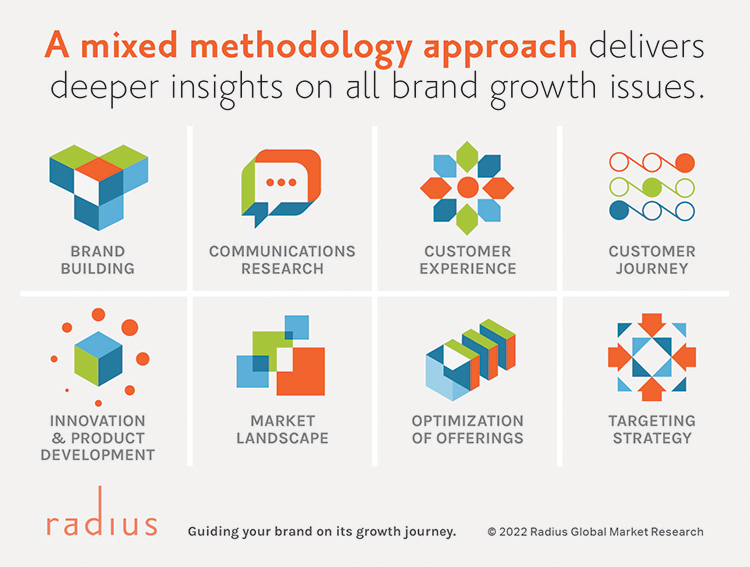From Quirk’s Outlook 2022: Commentaries by Industry Leaders on the Year Ahead
People’s relationships with brands are highly complex, and this is even more true in a business-to-business setting. For example, manufacturing, distribution, retail, and customer payment processing are connected through a complex maze of business-to-business (B2B) relationships that exist outside the view of end consumers. Financial services organizations often sell to end customers through a diverse network of intermediaries, such as financial advisors or insurance agents. In health care, pharmaceutical companies sell medical supplies, devices, and drugs to hospitals and physicians, and rely on these professionals to shepherd treatments through to patients. And of course, the health insurance relationship has multiple tentacles that span various constituencies.
A B2B brand team needs to consider a wide range of influencers and decision makers when laying out marketing plans and navigating the sales process. Some have C-suite titles, others may be IT professionals or HR executives, and others have product and service development roles within a professional organization. Regardless of title or responsibility, the perceptions, attitudes, and behaviors of these professionals need to be known and used to influence product, brand, marketing, and communication strategy.
The complex relationship between a B2B brand and its customers, along with the ever-shifting need states of these customers, makes B2B research a highly specialized and seemingly difficult endeavor.”
The role of an insights partner with a B2B-focused organization is to uncover the needs and opportunities, across multiple constituencies, that will strengthen the brand customer relationships and enhance their portfolio with innovative and relevant offerings. An insights framework must clearly and deeply identify the importance and frequency of the decision-maker needs. Do the current needs of executives have passing or long-term importance? Are these needs a one-time event or ongoing? Having a thorough understanding of shifting buyer attitudes and behaviors will make clear the necessary evolution of a brand’s portfolio offerings.
The complex relationship between a B2B brand and its customers, along with the ever-shifting need states of these customers, makes B2B research a highly specialized and seemingly difficult endeavor. To paraphrase a common expression, “the devil is in the nuances” when it comes to getting closer to B2B customer needs. While B2B customers have very defined and functional roles within an organization, they are still human beings who often lead, and decide, with emotions, not always pure logic or rationale. What’s fast becoming a best practice in B2B research is the use of mixed methodologies to get at both the functional and emotional factors that play into decisions by these professionals. The use of multiple research phases, both quantitative and qualitative, as well as mixing qualitative methods, leads to a deeper understanding of B2B decision-makers. This combined methodology approach is becoming the “gold standard” in creating a B2B insights approaches, and offers a brand team several critical advantages:
- Allows for both inductive and deductive thinking
- Simplifies the complex mindset of decision makers
- Provides a more holistic view of the consumer

Here are some guidelines in developing a mixed-methodology approach:
Research Design:
- Use a combination of approaches that allow you to capture insights at the macro level while also delivering “on-the-ground” perspective to bring these insights to life.
- Structure research phases together in a meaningful way so they build upon one another. For instance, start with Qualitative to optimize new ideas and then move in the Quantitative to test best, optimal ideas among a larger, representative sample of B2B decision makers.
- If Qualitative is deemed appropriate, determine the right approach for the task and audience. Online bulletin boards can be better for a national sample of hard-to-reach executives, one-on-one in-depth interviews can lead to more candid answers.
- Build internal stakeholder interviews into the design. Use these conversations with a cross-functional selection of those that manage the business to obtain a better understanding of the constructs, issues, and goals of the organization.
Sample Plan:
- Spend time conducting desk research (online, Dun & Bradstreet, other list sources, etc.) on your survey population to estimate the composition of the market. This will allow you to set interview quotas appropriately.
- Don’t assume online panels or list sources are comprised representatively to the population of interest. Communicate the census construct of your population and ensure survey invite send outs and incoming responses are comprised properly.
- Appreciate that sample sizes will be smaller, and margin of error will be higher. This is acceptable as universe size is much smaller than with consumer audiences.
Recruitment and Screening:
- Screen for only the factors that are necessary for the study.
- Understand that fraud rates are higher for B2B research, especially when using online panels. Therefore, blind the eligibility criteria within lists so that it is difficult for a fraudulent respondent to guess the answer patterns.
- Plan for an overage of interviews (10-15% above quota) which will allow for bad or fraudulent respondents to be removed.
Data Collection and Quality:
- Use red herring questions and open-ended responses to catch fraudulent respondents.
- Create multi-tiered criteria for removal and check data on an ongoing basis while field period is still active. Replace removals in a way that maintains the integrity of the composition of responses.
- Use desk research and prior knowledge of markets to determine face validity of all results.

Mixed Methodology in Action:
A major financial services company needed to refine its communication strategy. Its goal was to improve its positioning among financial advisors and become an authority on a type of fund it wasn’t currently offering. The insights approach consisted of two Qualitative sections—first, exploratory focus groups about funds in general, and then secondly, real-time concept optimization sessions to review and revise potential positioning statements. The approach concluded with a Quantitative portion consisting of an online, 24-hour poll with 150 advisors to validate performance of the fund positioning statements.
No matter what growth issue a B2B brand team is facing—from targeting to innovation development—a mixed methodology approach delivers a deeper and more nuanced understanding to guide strategic decision-making.
Ready to learn more?





